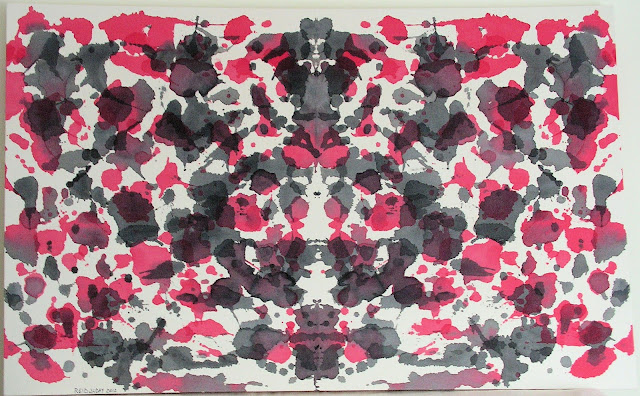I wanted there to be a recurring theme for all of them, but for each one to also have its own individuality. The theme I used was the Rorschach inkblots. The idea behind the Rorschach inkblot test is to show an image which may or may not suggest a particular picture or idea, and then let the subject you are evaluating tell you what they see or what feelings they have as a result of looking at the inkblot.
The Rorschach inkblots are all symmetric about a vertical axis, so I used this feature in the paintings. Also, I used only a light coating of white paint and water (instead of gesso) to try to maintain a parchment-type feel to the raw canvas. In order to imitate ink, I heavily-diluted the acrylic paint and pressed it hard into the canvas, ensuring that there was no thickness to the end result.
I have specific titles for these, but if I said what they were, it would defeat the purpose, right?
For Mike and Emma
2012, 34 x 54 inches, acrylic on canvas
In their living room
For Daniel and Noelle
2012, 34 x 54 inches, acrylic on canvas
In my brother's office
For Hannah
2012, 34 x 54 inches, acrylic on canvas
In her bedroom

For Holly and TJ
2012, 34 x 54 inches, acrylic on canvas
Location undecided.
For Mom and Pop
2012, 34 x 54 inches, acrylic on canvas
In the sun room
For Tobin and Lisa
2012, 34 x 54 inches, acrylic on canvas
In their living room
For Joel and Rachel
2012, 34 x 54 inches, acrylic on canvas
In their lake house bedroom













































